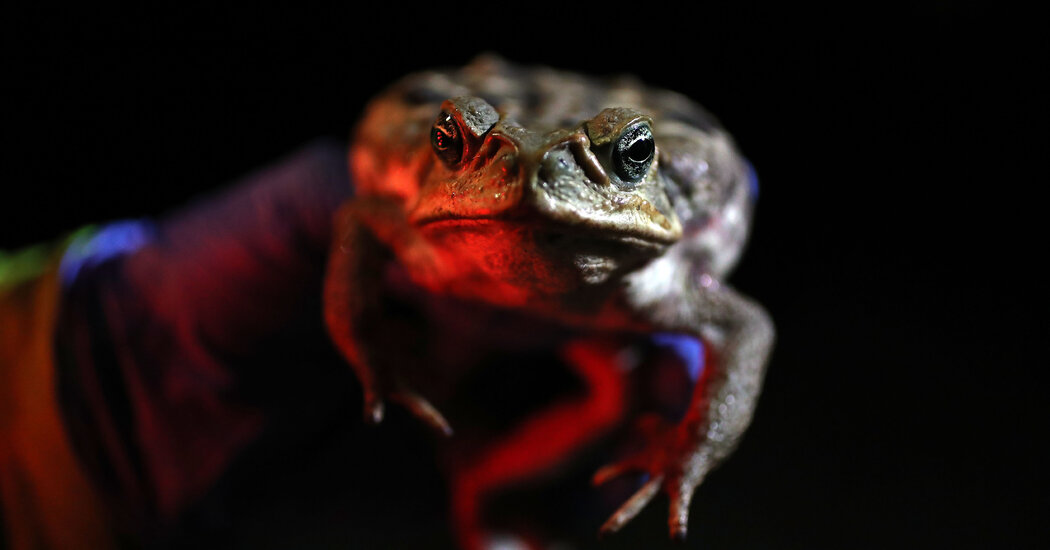[ad_1]
A new analysis published this week suggests that extreme weather linked to climate change might be much harder on native species than on nonnative ones.
As the planet warms, extreme weather events — heat waves, cold snaps, droughts and floods — are becoming more common and destructive. The new paper, published on Monday in the journal Nature Ecology & Evolution by a team from the Chinese Academy of Sciences, suggests that these sudden, violent changes in conditions could be helping to fundamentally reshape ecosystems.
In a statement, the team said that research on the impacts of extreme weather on ecosystems, while still in its early stages, was “critically important” to our ability to understand the effects of global warming on biodiversity.
The researchers, led by Xuan Liu, an ecologist at the Academy of Sciences, analyzed 443 studies that examined the responses of 1,852 native and 187 nonnative species — from land, freshwater and marine habitats — to extreme weather.
On average, nonnative species tended to show more positive responses to extreme weather, or, at least, less negative ones. Where nonnative land species might take a hit in population numbers from a disaster, for example, the effects on native land species could sometimes be more far-reaching, with native populations also losing geographic distribution and struggling to recover.
According to the analysis, native terrestrial animals tended to be hit hard by heat waves, cold spells and droughts, while native freshwater animals were generally susceptible to most events apart from cold spells. Nonnative terrestrial animals, however, were generally only affected by heat waves, while nonnative freshwater animals tended to suffer only from storms. Nonnative marine animals were largely indifferent to most disturbances.
One reason nonnative organisms might withstand extreme weather more readily is that species able to to rapidly establish populations in alien environments tend to be those with high reproduction rates, more adaptable behavior and physiology, and higher tolerance for disturbances, said Giovanni Vimercati, an ecologist at the University of Fribourg in Switzerland who was not involved in the research.
These are precisely the sorts of animals able to take advantage when extreme weather wipes out a chunk of native animals. In these cases, Dr. Vimercati said, in contrast to the common story of invasive species directly outcompeting native ones, they may simply prove “more resistant to extreme events and ready to take over after these occur.”
Other outside researchers praised the study, but sounded notes of caution around its conclusions. While an important research step, said Laura Meyerson, an editor in chief for the journal Biological Invasions, it also highlights some important research biases, since most of the studies that the team examined came from North America or Western Europe, leaving ecological impacts across the rest of the globe understudied.
“Results might change if it were possible to include more data from those missing regions and make this more of an evenly distributed global study in terms of the nonnative and native species included,” Dr. Meyerson said. “I would suggest that the results of this paper be interpreted with those gaps in mind.”
Jeff Diez, an ecologist at the University of Oregon who was not involved in the paper, also sounded a note of caution about drawing firm long-range conclusions. While not all change is benign or natural, he said, ecosystems constantly shift, and natural disasters often help keep abundant species in check and allow other species to persist.
“Were the measured responses in the underlying studies long enough to capture meaningful new changes to the system, or just transient dynamics following a disturbance, a common phenomenon in nature?” Dr. Diez said. “We don’t know.”
According to a report in September prepared by the Intergovernmental Science-Policy Platform on Biodiversity and Ecosystem Services for the United Nations, thousands of invasive species introduced to new ecosystems around the world are causing more than $423 billion in estimated losses to the global economy every year by harming nature, damaging food systems and threatening human health.
One useful takeaway from the study, Dr. Vimercati said, is the importance of monitoring areas recently hit by extreme weather events and of focusing management efforts on helping the quick recovery of native species.
“Promoting recovery, avoiding disappearance, or helping native species that are known to be vulnerable to extreme events could give native species enough time to evolve and adapt to novel weather patterns driven by climate change,” he said.
[ad_2]
Source link




